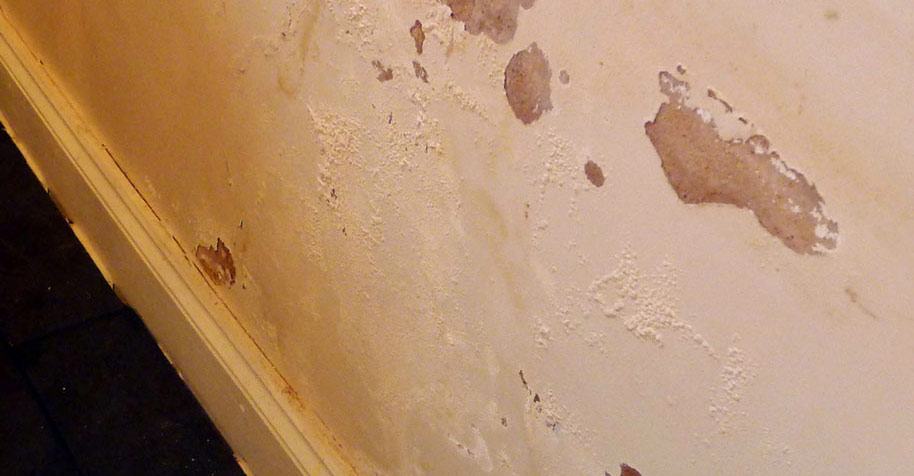Your gorgeous patterned wallpaper, your beautifully painted wall – what’s that, is that a damp patch on the wall?
It’s every homeowner’s nightmare to find something wrong in their property that makes them stop in their tracks. And the damp patch on the interior wall is a sure sign that something’s not right in your home.
There are a number of reasons why this is occurring – is there a loose, cracked or missing tile on the roof? That could be letting water in.
Is your property’s guttering in good condition? If your gutters are broken or blocked, again, this could be causing the water ingress.
Or how about the plumbing, is it in good condition? Maybe a broken or damaged pipe could be leaking, causing internal leakage?
Whatever the cause, it’s important that you discover the source of the damp problem and have it fixed as soon as possible.
The effects of not fixing the issue can lead to the deterioration of brickwork, crumbling plasterwork, can cause beams and floors to rot and damage interior walls, as the damp patch on the interior wall would indicate.
New Build or Old Building?
What is important to understand in the hunt for the cause of your damp problem is the difference between old and new builds.
Old buildings, predating 1875, were not required to have the damp-proof course installed. However, the filthy urban living conditions of the Victorian age prompted the Public Health Act 1875 which aimed to improve health through better residential construction.
The damp proof course was made compulsory after the 1875 act.
Even so, the DPC was only made of slate or lead and it wasn’t until the latter years of the 20th century that more robust materials were used such as polythene or bitumen-polymers.
In addition, older buildings were not designed for the types of loft insulation that are prevalent today and so, whilst staying warm with layers of deep insulation, they can be prone to “sweating” and so condensation can be a problem.
Double-glazing doesn’t help either, as the new PVC windows and frames are designed to make your home more airtight.
So, older buildings in particular need to be able to breathe.
Rising Damp or Penetrating Damp?
If the damp patches on your walls come from the ground up, then there’s a very good chance that you have rising damp. The occurrence of rising damp is a classic sign of problems with the damp proof course.
Penetrating damp patches on interior walls will be down to other causes such as that leaking roof, the problem with your gutters or the leaky plumbing.
To deal with each issue you should first ensure your property is in good condition. Fix those leaks, repair the roof, mend the plumbing. Make external drainage is good too so that the earth around your property is not sodden.
If the problem still persists then you may have a condensation problem. You need to ventilate your property as best you can, installing extractor fans, not drying your clothes on the radiator etc. See our article on how to reduce condensation in your home.
If you’ve exhausted all these possibilities and you’ve still got a damp patch on your interior wall, then it is well worth considering The Schrijver System of damp control.
The Schrijver System
Our system is a green, environmentally-friendly alternative to traditional methods of damp proofing.
The Schrijver System is installed with no mess, no fuss and doesn’t require you to redecorate.
By installing our patented elements in your walls, dry air is drawn in and, through natural ventilation, the humid air is removed from your property.
So, no more damp patches on your interior walls.
To arrange for an inspection of your property by one of our damp specialists, call 01689 800101 or complete our easy contact form.

